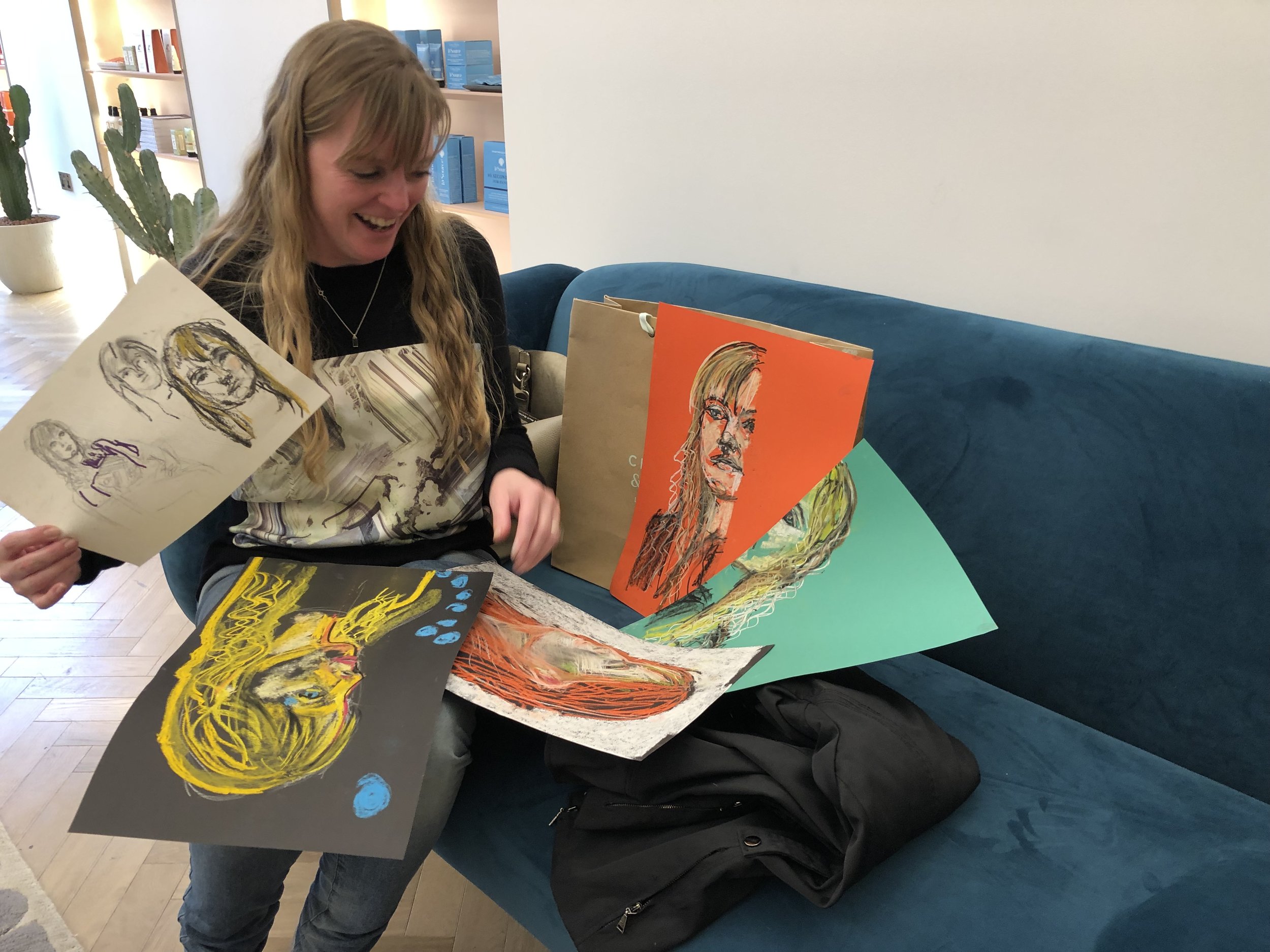I was one of four female identifying artists selected by Sweet Art to participate in their Intersect Portrait Project on 16th March 2019. The objective of the project was to explore the female gaze through a collaborative approach to portraiture. The event took place at the Crabtree and Evelyn concept store in Islington and all the materials were provided by Great Art. This is about my experience, thoughts and reactions to this unique artistic event.
The set-up
Members of the public (female) were invited to purchase tickets for a 16 minute portrait sitting. The day started at 10am and ran until 5pm. During that time, we had 16 sitters. Each sitter took home 4 portraits. Each portrait was a collaboration of the four diverse artists - Shadi Mahsa, Susan Bryan, Odette Farrell and myself. Each artist spent four minutes at an easel, then moved onto the next, continuing the portrait of the sitter by the previous artist. At the end of the sitting, the sitter was presented with four very different drawings to take home.
In total, we created 64 portrait drawings that day.
The experience
My overall experience of the day was one of intense exhaustion, both physically and mentally. The rapid succession of sitters, meant there was little time to think about the drawing process. Starting a drawing was by far the easiest step, as the blank paper allowed control of the composition, a quick-fire portrait sketch and the definition of the overall proportions of the sitter.
Moving onto the next easel was always a surprise, as the drawing before me felt foreign - a different angle, a different composition, different colours, marks etc.. On the one hand, having only four minutes at each easel liberated me of my usual anxieties associated with drawing a portrait - I could not control where the drawing would end up, so why worry about every line, feature, shadow? On the other hand, I felt frustrated not to be able to spend longer on each individual drawing. Or at least have more time to think about how best to work on top of the other artists' drawings. Instead, I felt like I was frantically trying to find the sitter's face amidst other's marks. It felt less collaborative, more reactionary.
My reaction
The act of drawing from life all day, with a multitude of fascinating sitters is a pleasurable experience for me. What was fascinating is how I felt about the output of the day.
Often, I recognised more of the artists' self-portraits in the drawings, than the sitter. At times, it seemed like a battle of layers - rather than a 'weaving together' of marks. Each artist's marks showed visible signs of a struggle, the layers of the drawings did not sit comfortably together - a clash of colours, lines obliterating delicacies previously captured, or features rendered unrecognisable through overwork.
The lack of control in this collaborative process left me questioning my own artistic judgements and abilities. Even ten days later, I still do not enjoy looking at the photos I took of the various portraits. I feel uncomfortable about the end result.
What fascinates me, is why I feel this way? The Intersect Portrait Project has made me question some fundamental assumptions and beliefs I hold. What has informed my sense of aesthetics? My white, middle-class European upbringing? Has the traditionally male western canon of art been the key influencer in my own artistic training?
How does the female gaze, or specifically, my gaze differ to the gaze of the other female artists? Why do I feel a sense of frustration when viewing someone else's interpretation of the sitter? What is the underlying cause of my need for control over the output? Is it the deep-seated desire to create a self-portrait in every portrait? The need to recognise oneself in the work?
Or do I feel the need to flatter the sitter, to show them a 'nicely rendered' representation of themselves? Due to the speed of each sitting and often the back-to-back sitters, I am left wondering whether we as artists took the feelings of the sitter into account. At times it felt like a conveyor belt of sitters, resulting in a loss of individual subjects and the objectification of the models. With hindsight, I think this is the main reason I am left feeling uncomfortable about the output. The output is about the artists, not the sitters.

